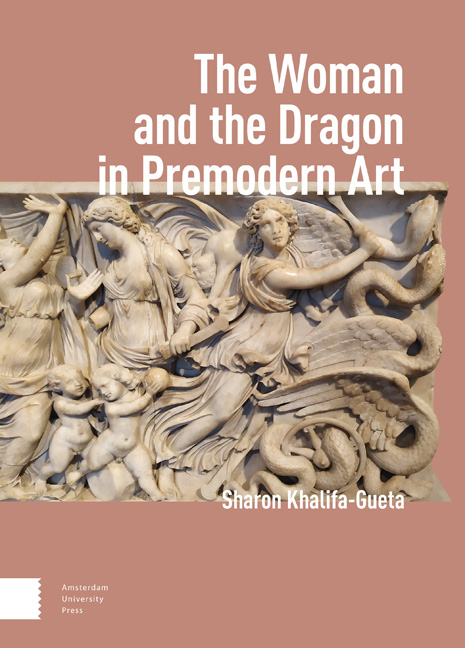Book contents
- Frontmatter
- Contents
- Acknowledgments
- Introduction
- 1 The Dragon
- 2 The Cave and the Womb: The Myth of Cadmus and the Myth of Apollo and Python
- 3 Eligible Wives and Monstrous Women: Andromeda and Medusa
- 4 Medea – The Holy Woman and the Witch
- 5 Eve and Lilith — Christianizing the Great Goddess and the Dragon
- 6 Saint Margaret – Taming the Dragon
- Conclusion
- Bibliography
- Index
- Frontmatter
- Contents
- Acknowledgments
- Introduction
- 1 The Dragon
- 2 The Cave and the Womb: The Myth of Cadmus and the Myth of Apollo and Python
- 3 Eligible Wives and Monstrous Women: Andromeda and Medusa
- 4 Medea – The Holy Woman and the Witch
- 5 Eve and Lilith — Christianizing the Great Goddess and the Dragon
- 6 Saint Margaret – Taming the Dragon
- Conclusion
- Bibliography
- Index
Summary
This study set out to explore the motif of the woman and the dragon, while differentiating it from that of the male dragon-slayer and establishing it as a related yet distinct constellation of signs and meanings. It was motivated by an understanding that an in-depth exploration of images and texts concerned with women and dragons should focus on an epistemological examination of the distinct aspects of such relationships, rather than relying on the common presumption that the characteristics defining images of male figures with dragons are equally applicable to representations centered on women.
As the discussion unfolding throughout has revealed, women rarely fight dragons. Rather, women communicate and collaborate with dragons, fusing with them or are equated with them. The book has followed this motif as it evolved from the Greco-Roman era to medieval and early modern Europe, while foraying beyond these geographical boundaries to explore related examples from ancient Egypt and Mesopotamia. Indeed, further research may reveal this motif to constitute an archetype relevant to even more remote cultures.
The analysis of this motif's development, while relying heavily on literary sources, centered on visual representations, which have demonstrated a stronger hold in folk and popular traditions, and have lent themselves to the simultaneous manifestation of competing belief systems. The complex charge of these mythical images sheds light on the different cultural contexts in which they were created, as small visual details shed light on complex constellations of meaning, which are woven together into a rich tapestry of knowledge. In the words of the art historian Aby Warburg, “God is in the details.” The analysis of the vast amount of visual material examined in this book highlights both the consistent elements of this motif as they persisted over time, as well as the changes and anomalies occurring in the context of different historical and sociocultural contexts, and the individual signs of which the motif is composed.
As elaborated in Chapter One, dragon imagery arose out of ancient perceptions of snakes as the great adversary – the opponent that must be defeated by a god, king, or hero in order to establish his authority and his right to rule or lead. However, this book demonstrated that mythical dragons in antiquity – while almost always doomed to die or be defeated – were not necessarily considered evil or malicious, but were simply characterized as having a different nature or different agenda than the male protagonist.
- Type
- Chapter
- Information
- The Woman and the Dragon in Premodern Art , pp. 273 - 280Publisher: Amsterdam University PressPrint publication year: 2023

